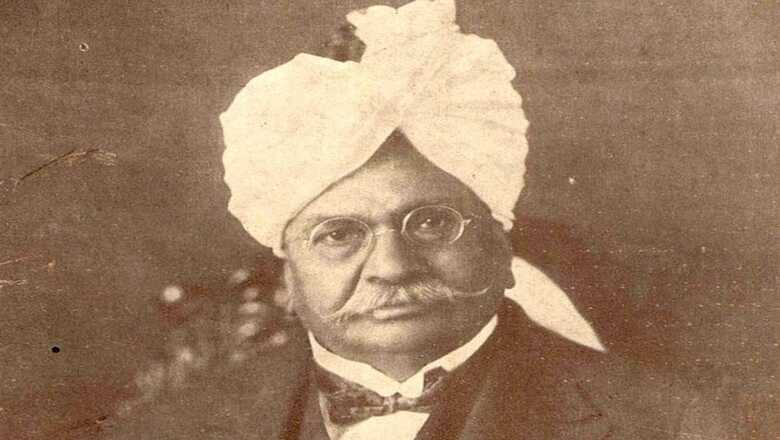
views
Recently, the Department of Spine Surgery, Sir Ganga Ram Hospital, invited me to deliver the Annual Sir Ganga Ram Spine Oration. This is the second time this oration has been organised. Everyone knows of Sir Ganga Ram Hospital in Delhi. Its foundation stone was laid in 1951 and it was inaugurated in 1954. This is not the original Sir Ganga Ram Hospital though. The original one was established in Lahore in 1921, while Sir Ganga Ram (1851-1927) was still alive.
I presume it still exists under the same name, though there is the famous story, ‘The Garland’ by Saadat Hasan Manto, set against the Lahore riots of 1947 when residents tried to get rid of anything “Hindu”. This included a statue of Sir Ganga Ram. The crowd pelted it with stones and covered the face with tar. The main protagonist proceeded to garland it with a garland of shoes. Obviously, he had no idea who Rai Bahadur Sir Ganga Ram was. Meanwhile, since there were riots and arson, the police were called and they started to fire. One of these bullets struck the protagonist and his friends said, “Take him to Sir Ganga Ram Hospital,” that is, the one in Lahore.
Those familiar with Delhi will know of Sir Ganga Ram Hospital in Delhi. I doubt very much they will know much about the man since he was identified with Lahore and what is now Pakistan. What is the oldest college in Delhi? Depends a bit on how we define the antecedents. One of the oldest is what is now known as Zakir Hussain College. This eventually became a government college in 1864 and a parallel one was established in Lahore. Let me quote from the Indian Education Commission of 1882, commonly known as the Hunter Commission. “In 1877 the college classes at Delhi were closed in order that the staff of the Government College at Lahore might be strengthened without an increase of expenditure.”
Ganga Ram studied in this government college, in Lahore. He then went on to study at what is now IIT Roorkee. At the time, it was called Thomason College of Engineering, established to train engineers for the Ganga canal. James Thomason was then Lieutenant Governor of North Western Provinces. I once went to a convocation at IIT Roorkee and asked the students, “Why is there a replica of a locomotive in the main hall?” They didn’t know. Nor did the faculty. The first indigenous locomotive was built (actually assembled) by Ajmer Workshop in 1895. Before that, all locomotives were imported and this replica was of the Thomason locomotive (named after the same LG), imported for the Solani Aqueduct in 1851.
Most of Sir Ganga Ram in his professional career was in Lahore and around it, construction and infrastructure. That explains “Sir” and “Rai Bahadur”. But what interests me much more is dana, ishta and purta. Those are private acts, not official and professional. All our texts praise dana (donations) and there is a dana dharma parva in Mahabharata. Dana is especially recommended when one visits tirthas. Since dana is like transfer payments, from the point of view of national income accounting, it is not very obvious what multiplier effects might be.
The word ishta has many meanings, but one is sacrifice. This would be a bit like the multiplier effects of revenue expenditure. Purta has many meanings too, but one is civic works – digging wells, constructing ponds and gardens, building roads, planting trees, and constructing temples. Note that this wasn’t done only by kings, counterparts of government today, it was done by citizens as part of dharma, depending on ability. This was done as part of the dharma temple, not prodded by the stick of CSR or the carrot of subsidies. Purta would have multiplier effects like those of capital expenditure.
I don’t think there was anything exceptional in what Sir Ganga Ram did (in what is now Pakistan) through dana, ishta and purta. Most people, who could afford it, did it as a matter of course. Some probably still do, though the practice may be dying out.
I am somewhat sceptical when there are cross-country studies on social philanthropy and I don’t mean corporate philanthropy alone. There are huge measurement and data problems, particularly for philanthropy of the non-corporate type. But I have read studies that suggest a positive correlation between “religiosity” and “donations”. “Religiosity” is even more difficult to pin down and I would prefer the word dharma. Indeed, dana, ishta and purta are part and parcel of our dharma template as individuals and householders. They figure in all three types of karma (rites) — nitya (daily), naimittika (for special occasions) and kamya (with a specific desire in mind). Do we remember that dharma template or are we fast forgetting it? Is there a metaphor in a garland of shoes being placed around Sanatana Dharma?
Sir Ganga Ram is gone. It doesn’t matter to him what we remember him for. But it does matter to us. It matters because we shouldn’t forget our legacy and our heritage and that amnesia is a real danger.
The author is the chairman of the Prime Minister’s Economic Council and a well-known Sanskrit scholar. Views expressed in the above piece are personal and solely that of the author. They do not necessarily reflect News18’s views.














Comments
0 comment